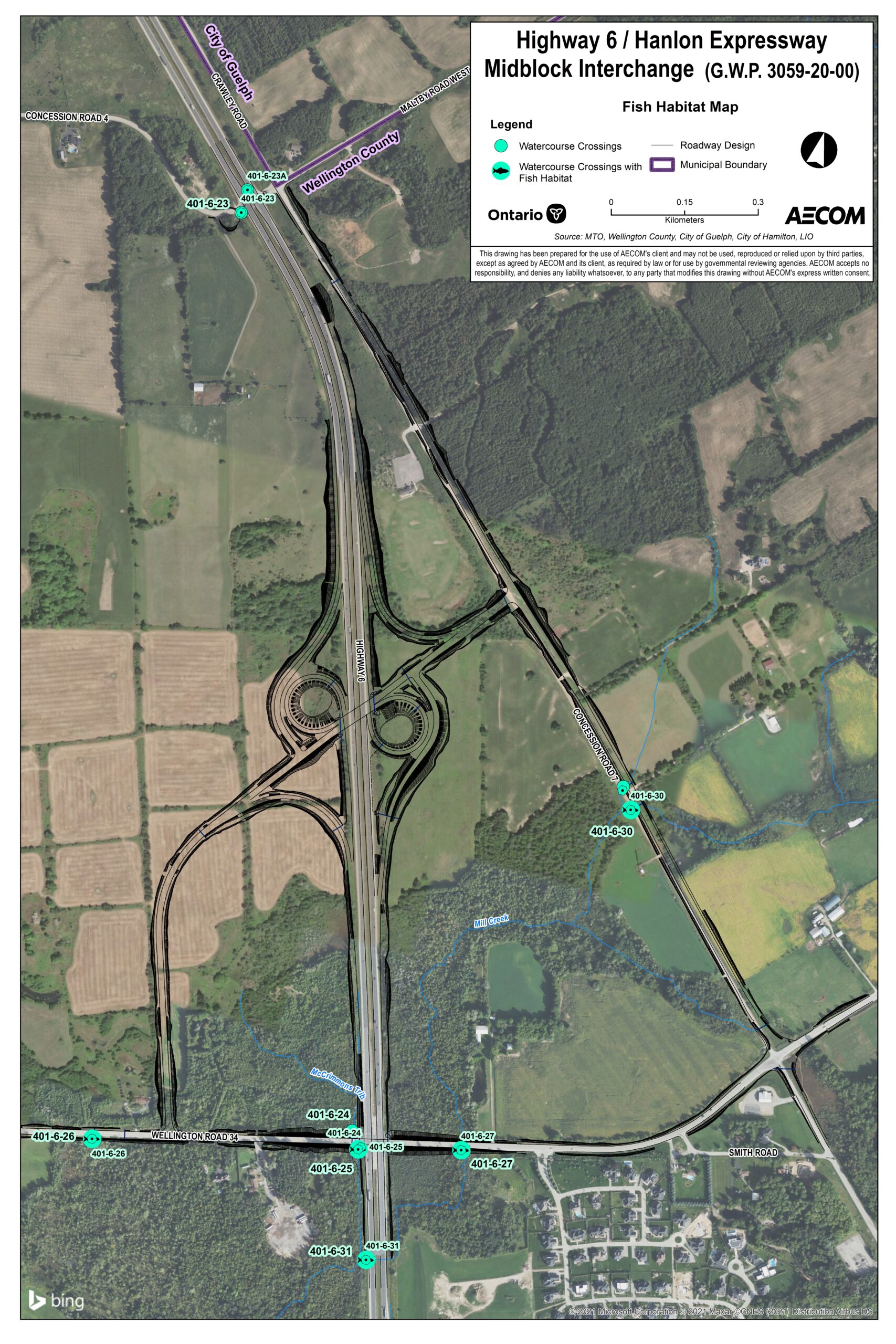Key Findings
- McCrimmons Creek and its tributaries flow through the Study Area and drain primarily agricultural areas in the northern and western portions of the Study Area.
- Five out of seven watercourse crossings included permanently flowing coldwater and warmwater features that support a diverse fish community including Brook Trout and Brown Trout habitat which are coldwater migratory species.
- No aquatic SAR have been identified within the Study Area.
Please refer to the Fish Habitat Map below for the location of water crossings and fish habitat within the Study Area.
Click on the map to view a higher resolution plan.
Table of Contents
Potential Impacts
- Potential impacts to riparian vegetation.
- Potential for increased erosion and sedimentation during construction.
- Potential for minimized reduction in stream flow during construction.
- Potential impacts to fish and fish habitat.
- Potential for exposure to chemical substances from accidental spills on construction site.
Mitigation Measures
- Timing windows, imposed by regulatory agencies will be followed in construction to avoid harm to fish and fish habitat at key life stages.
- The new culverts will be designed to facilitate fish passage and improve fisheries habitat functions; where culvert conveys watercourse identified as fish habitat.
- Riparian vegetation will be retained to the greatest extent possible. The disturbed area will be revegetated with native vegetation.
- Erosion and sediment control measures will be implemented throughout construction to avoid or minimize the introduction of sediment into waterbodies within the Study Area to protect water courses.
- In-water work area isolation plans will be designed and implemented to maintain clean flow around the work area where in-water work is proposed.
- A spill management plan will be prepared and properly implemented in the event of accidental spills.
Did you know?
Due to the potential impacts to fish and fish habitat, Fisheries and Oceans Canada has reviewed the culvert designs and provided guidance on proper mitigation, including timing windows for in-water works.


